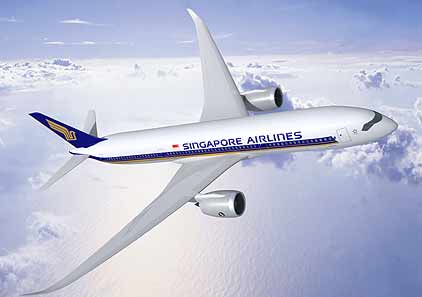By Guy Norris & Max Kingsley-Jones
Airbus looks to add larger 350-seater to twinjet family, but launch may be held up as snags beset ultra-large airliner
Airbus is studying a bigger version of its largest A350 XWB variant, the -1000, to improve its competitiveness against the Boeing 777. But the manufacturer may be forced to delay the formal launch of the entire A350 XWB family as it battles with the more pressing problems that surround the A380.
As unveiled at the Farnborough air show in July, the A350-1000 will seat 350 passengers in a three-class configuration – around 15 fewer seats than the largest 777 variant, the -300ER – with service entry set for 2014. But according to airline sources, Airbus is studying a larger A350-1000, partly due to pressure from Lufthansa, which is evaluating the A350 along with the Boeing 787 for its long-haul fleet needs. The larger -1000 could compete more effectively with the -300ER, and extend the trip cost advantage over the baseline 777-200ER.
| |
|---|
Airbus may put A350 aside temporarily as it focuses on A380 problems |
Airbus says the design of the A350-1000 “has not changed since Farnborough”.
The study is evaluating higher thrust requirements beyond the 95,000lb (423kN) limit outlined for the -1000 variant when it was unveiled in July, but General Electric, which provides the industry’s only engine capable of producing more than 100,000lb thrust, continues to maintain that it will not power any competitor to the GE90-115B-powered 777-200LR/300ER.
GE, which is offering the GEnx in the 75,000-87,000lb-thrust class for the revised A350-800/900 XWB, but not for the -1000, says only that it remains “in continued discussions with Airbus as the aircraft family evolves”. Rolls-Royce, the only engine supplier supplying all three variants, with its Trent 1700 family, says it is “in constant discussion with Airbus about a range of issues, including the A350”. Airbus’s studies are believed to be geared to the rising number of potential 777 replacement opportunities that could arise around 2014-15. Roughly 70 777s will have been in service for 15-16 years by 2014, with around 60 aircraft having 17 years in service by the same date and 30 with 18 service years.
Meanwhile, industry sources say that the October launch target set at the A350 XWB’s Farnborough unveiling could now slip into next year as the bulk of Airbus’s engineering resources have been deployed into resolving the ongoing A380 production delays.
Airbus says that it “remains committed to the XWB and the objective remains [to launch in] October, or in any case before year-end”. Flight International understands that at least one key A380 customer has told Airbus to put the A350 to one side and keep its focus on the A380 in the near term. But any further launch slip is likely to push the A350’s service entry beyond the mid-2012 target set for the initial -800 model, and Airbus is anxious not to hand further advantage to the rival 787.
Source: FlightGlobal.com
























